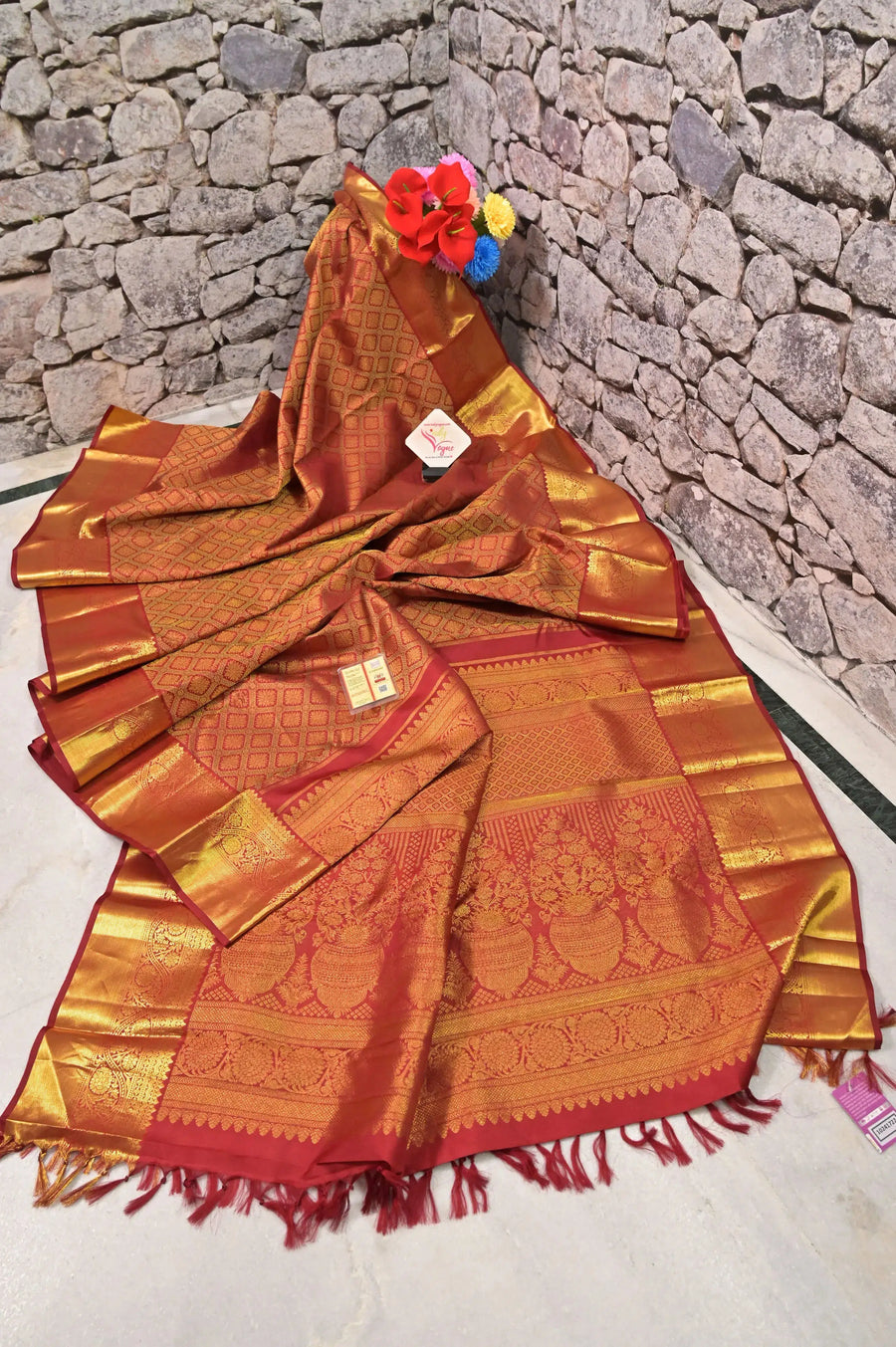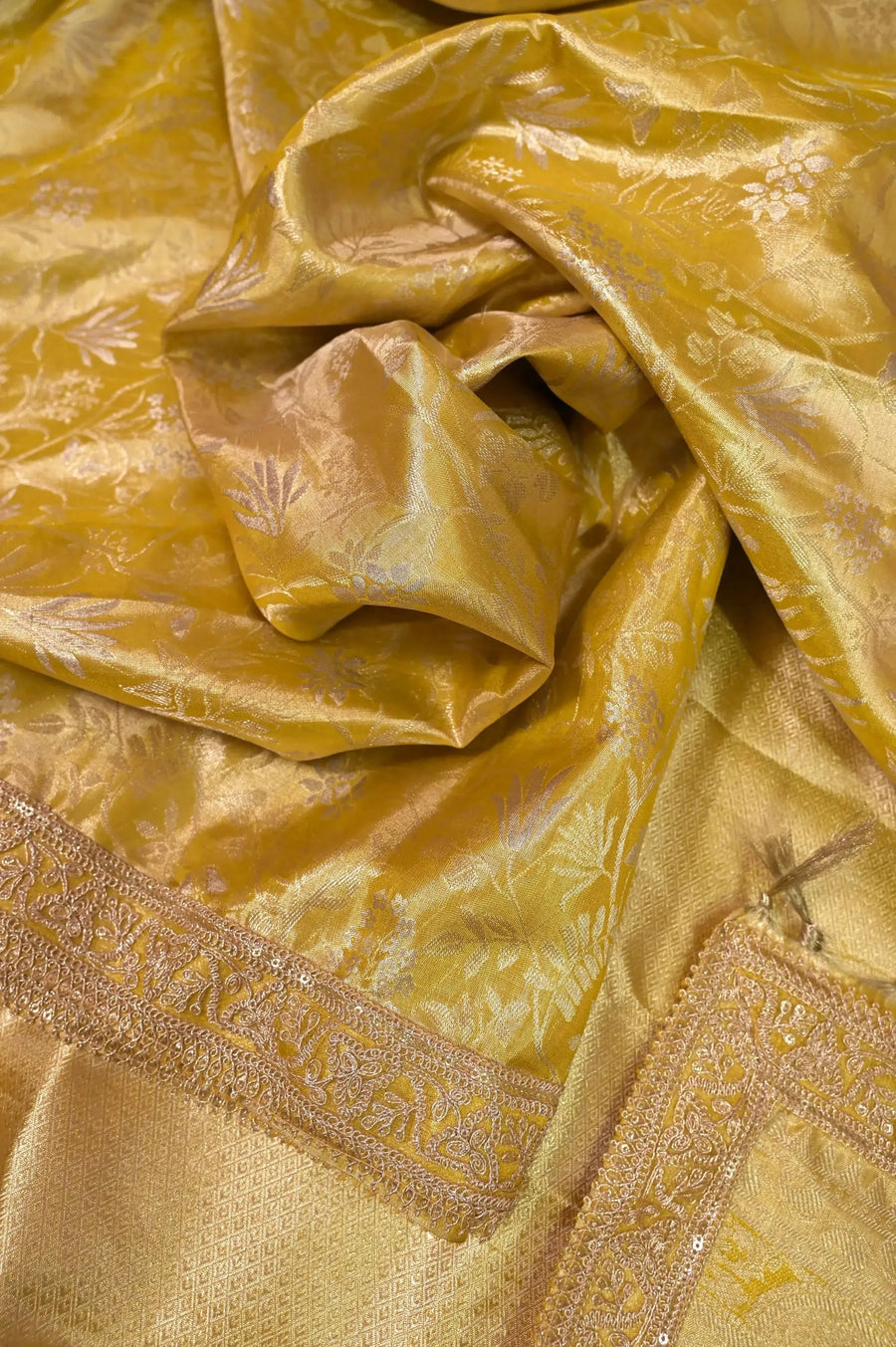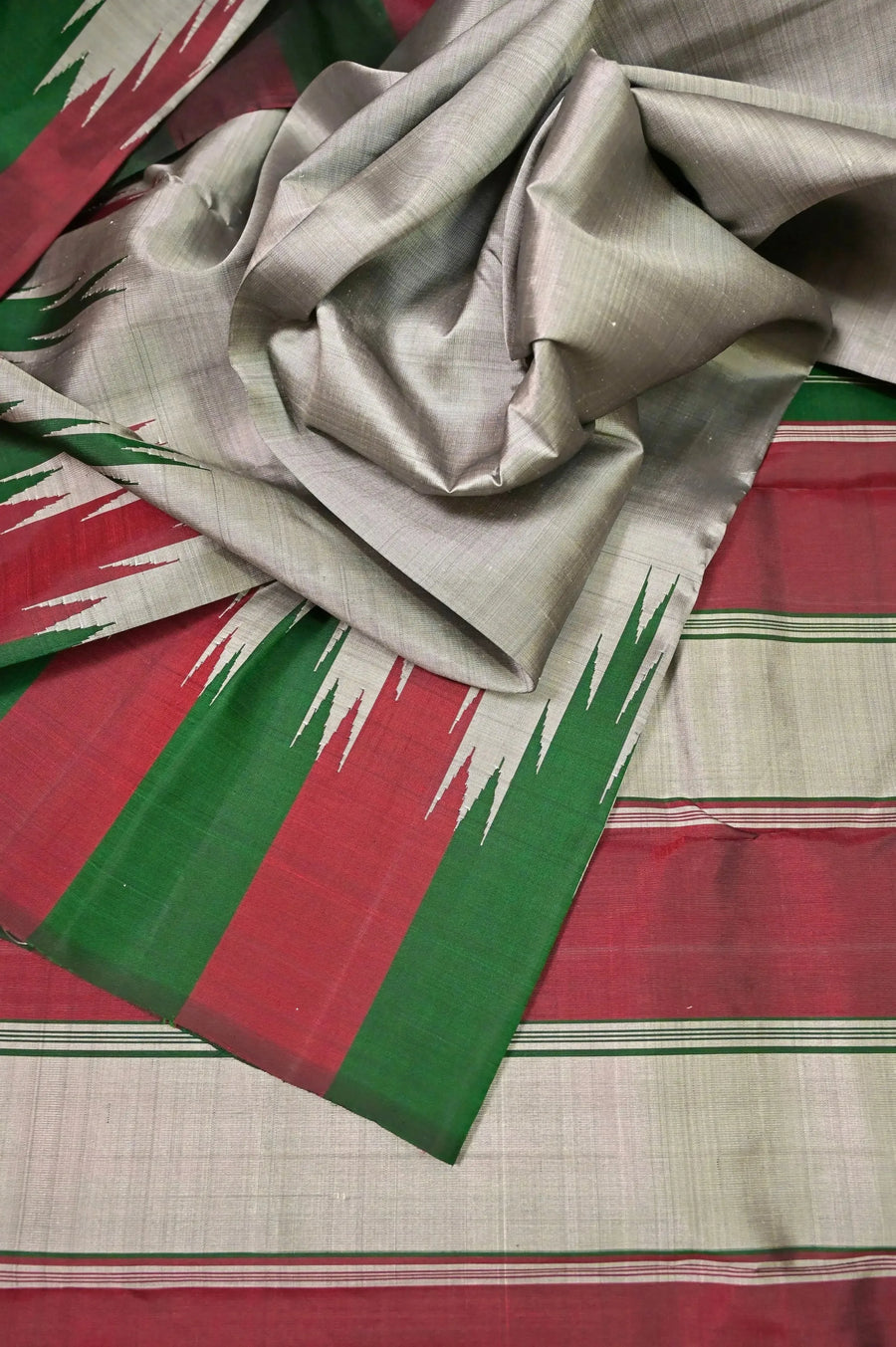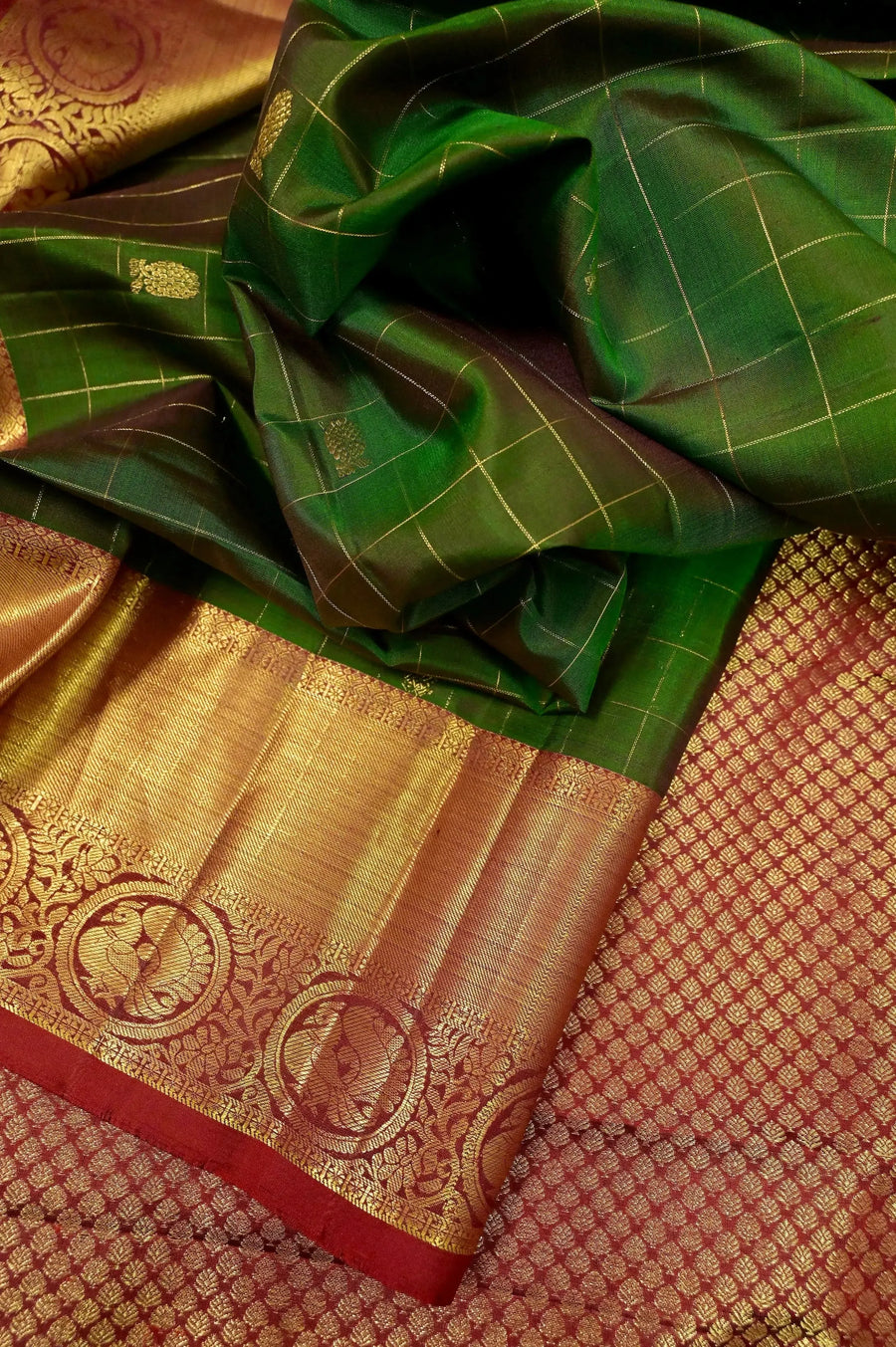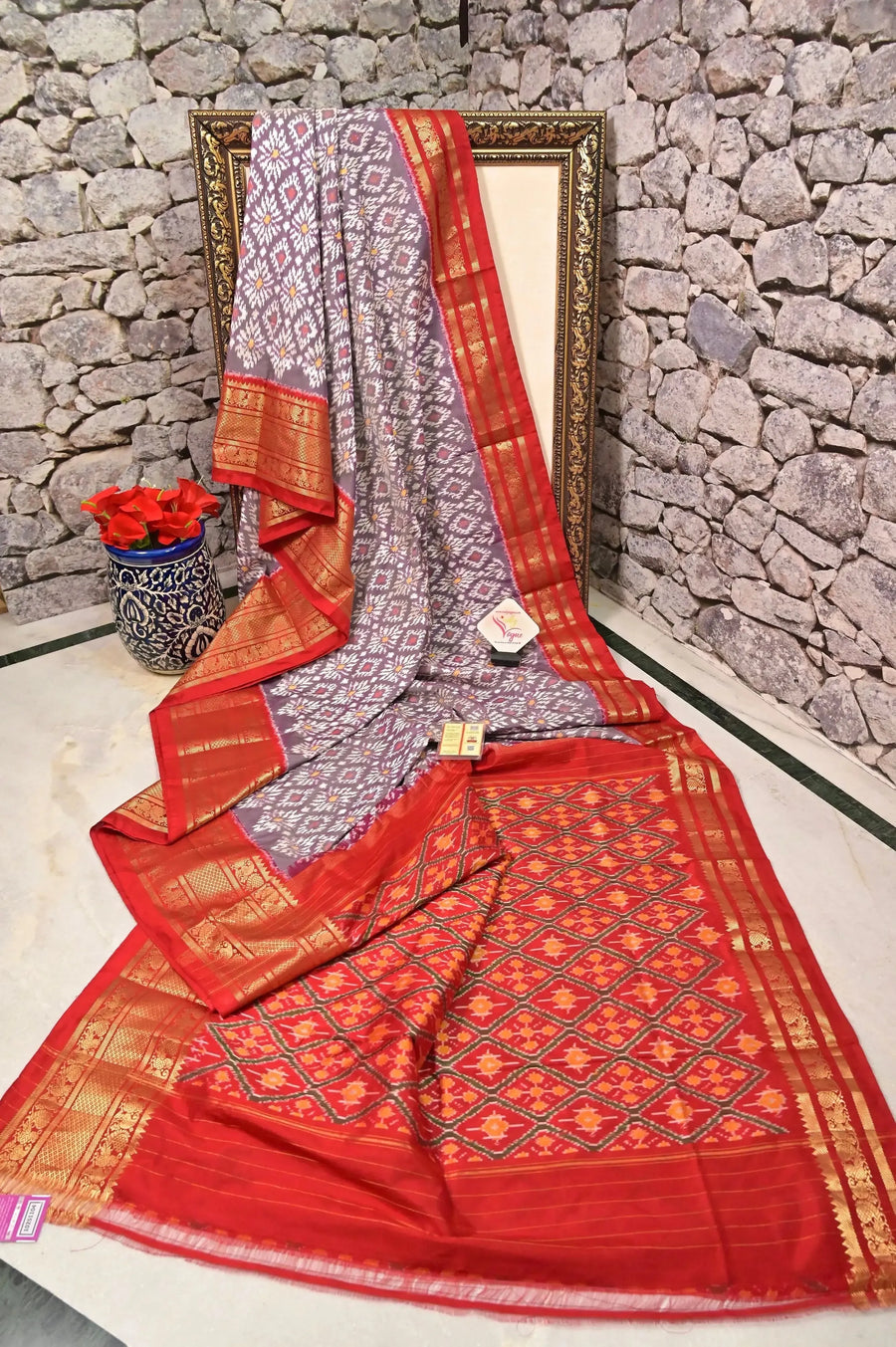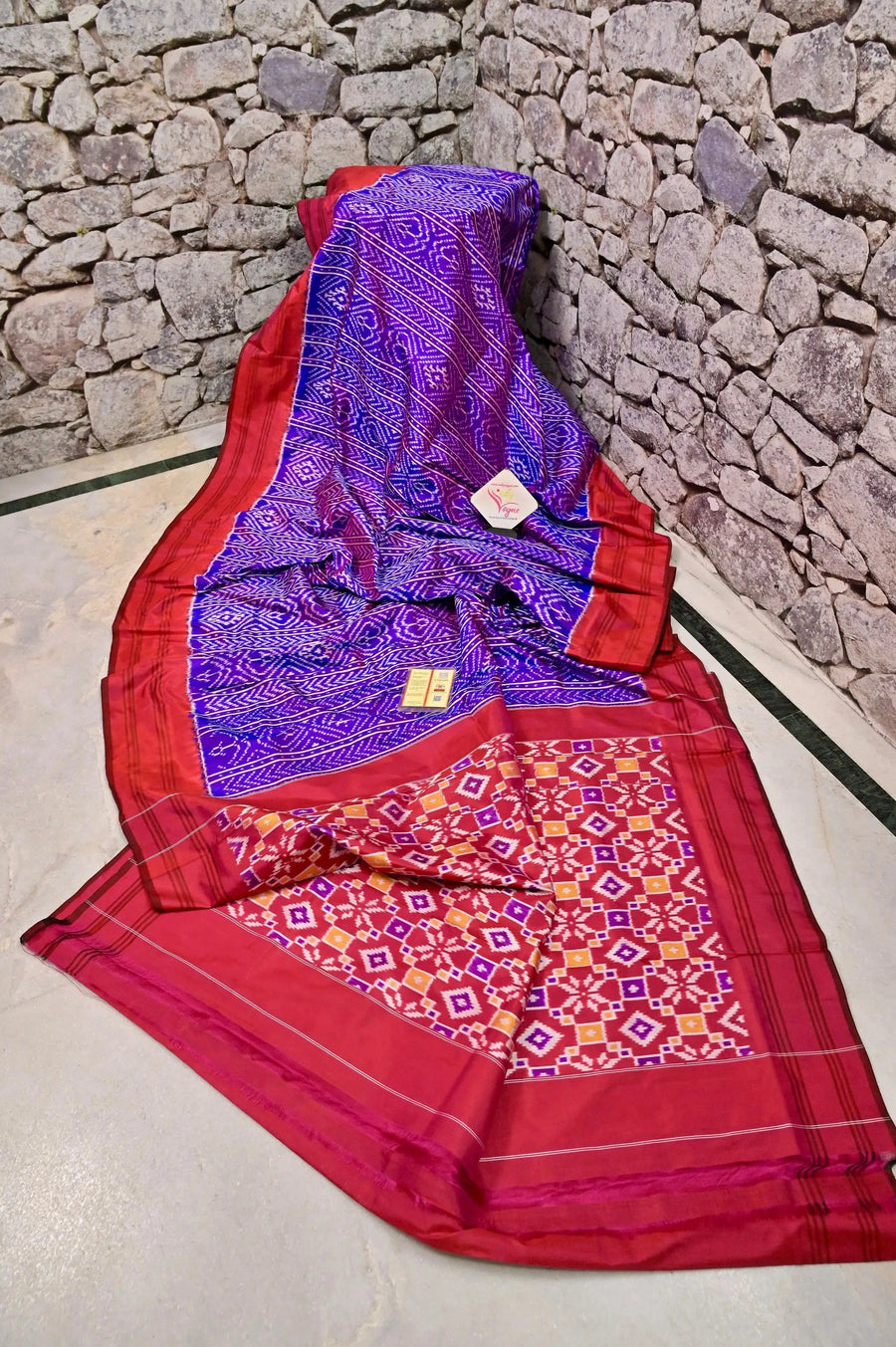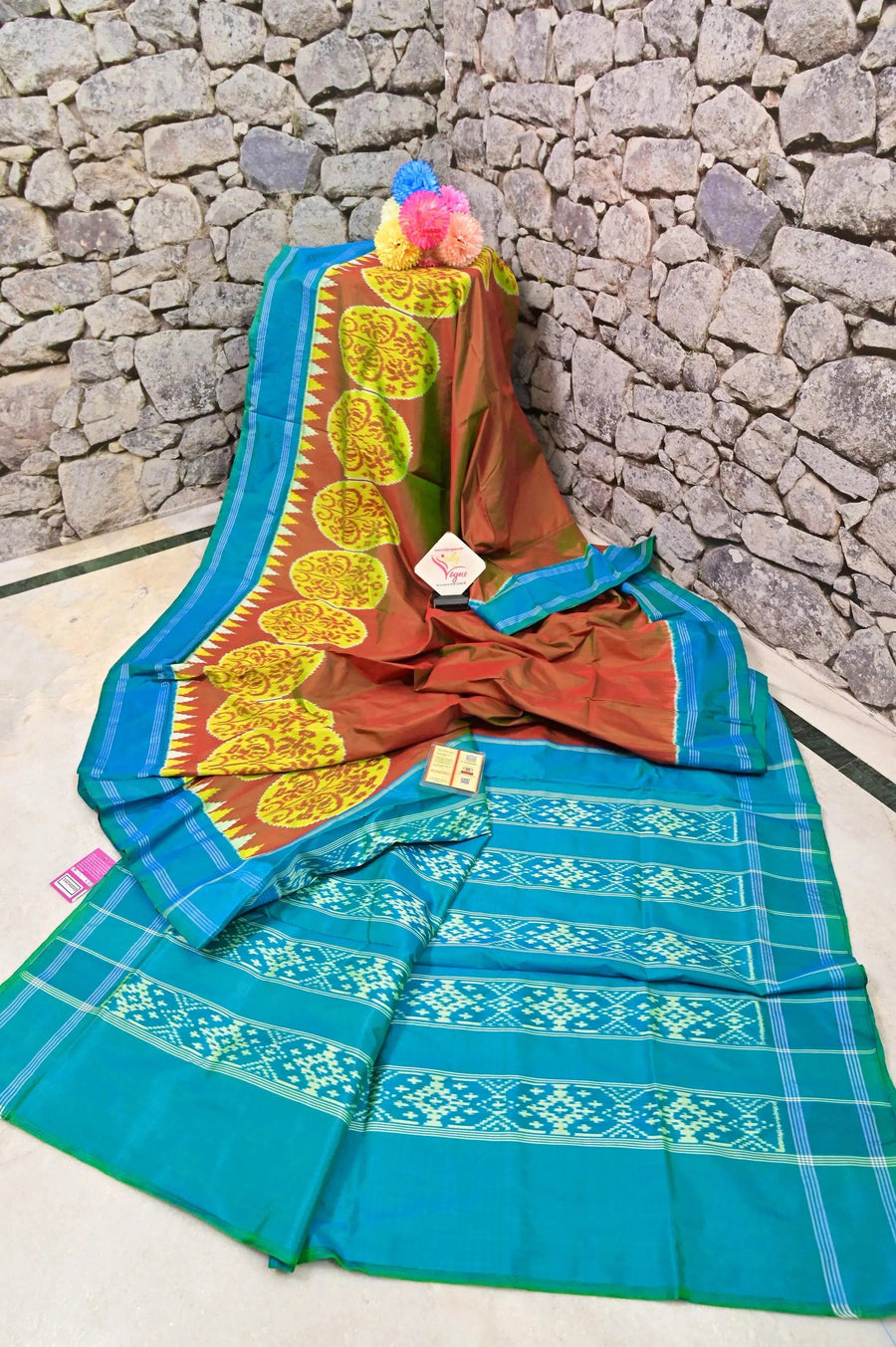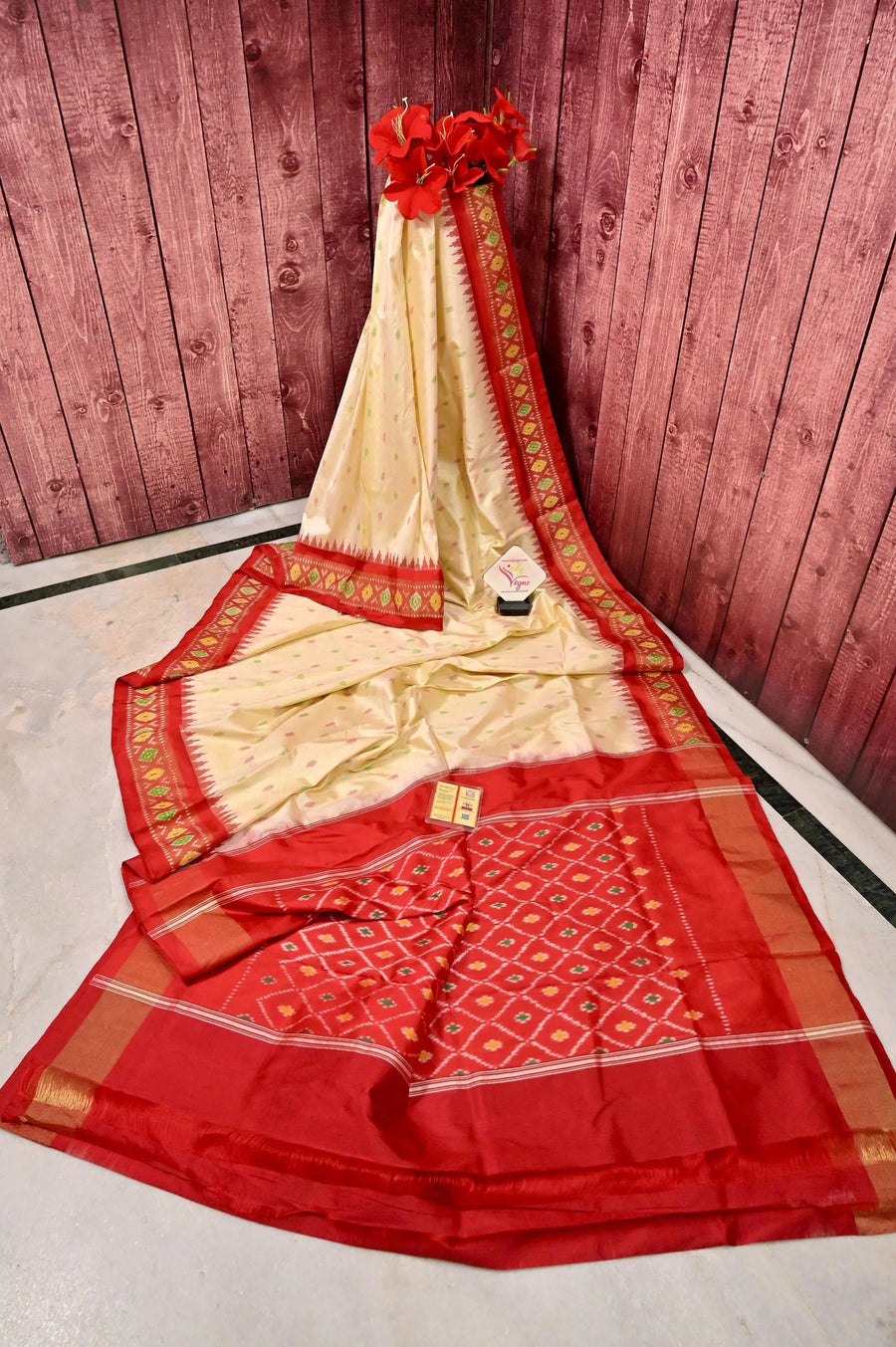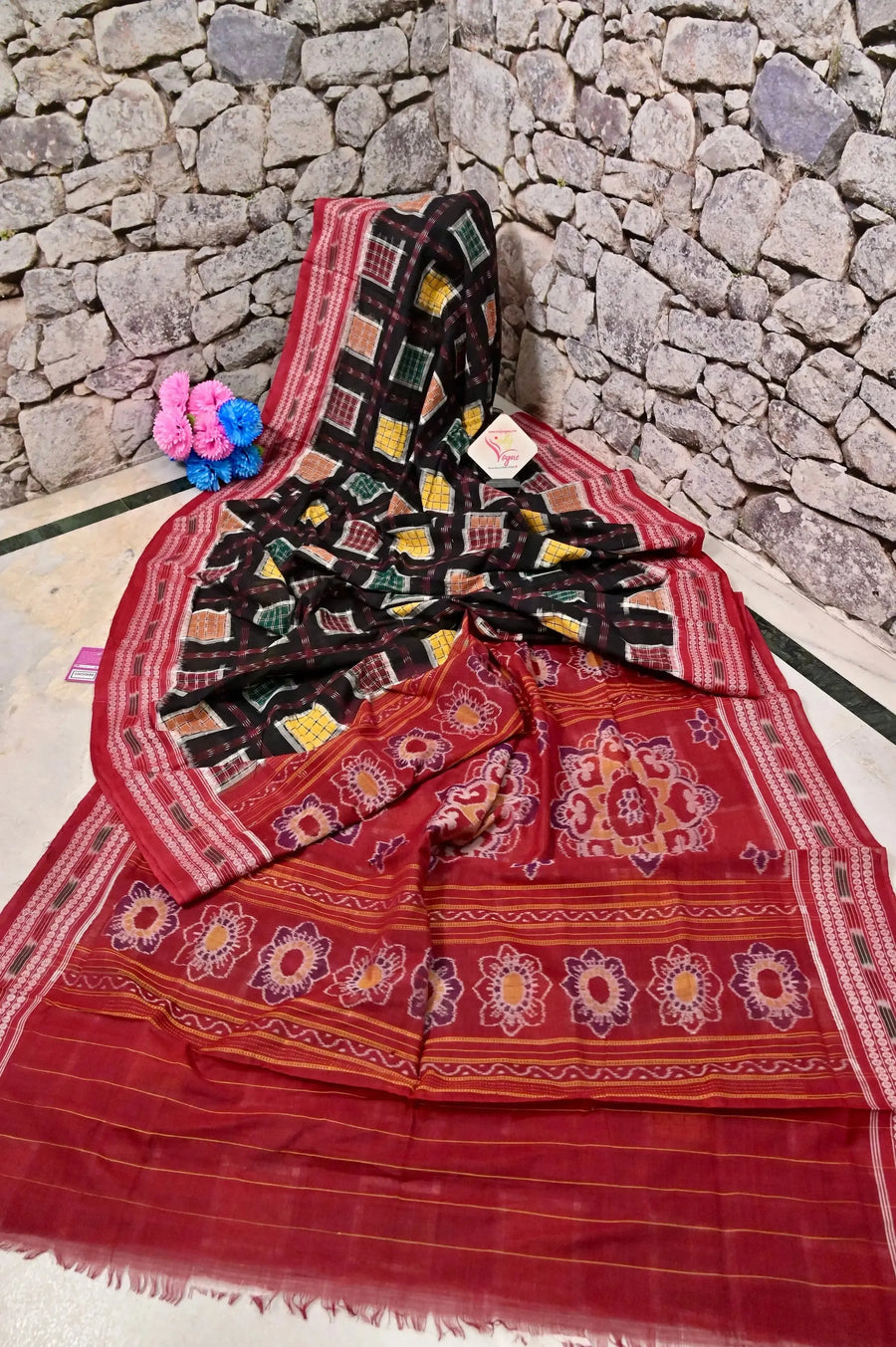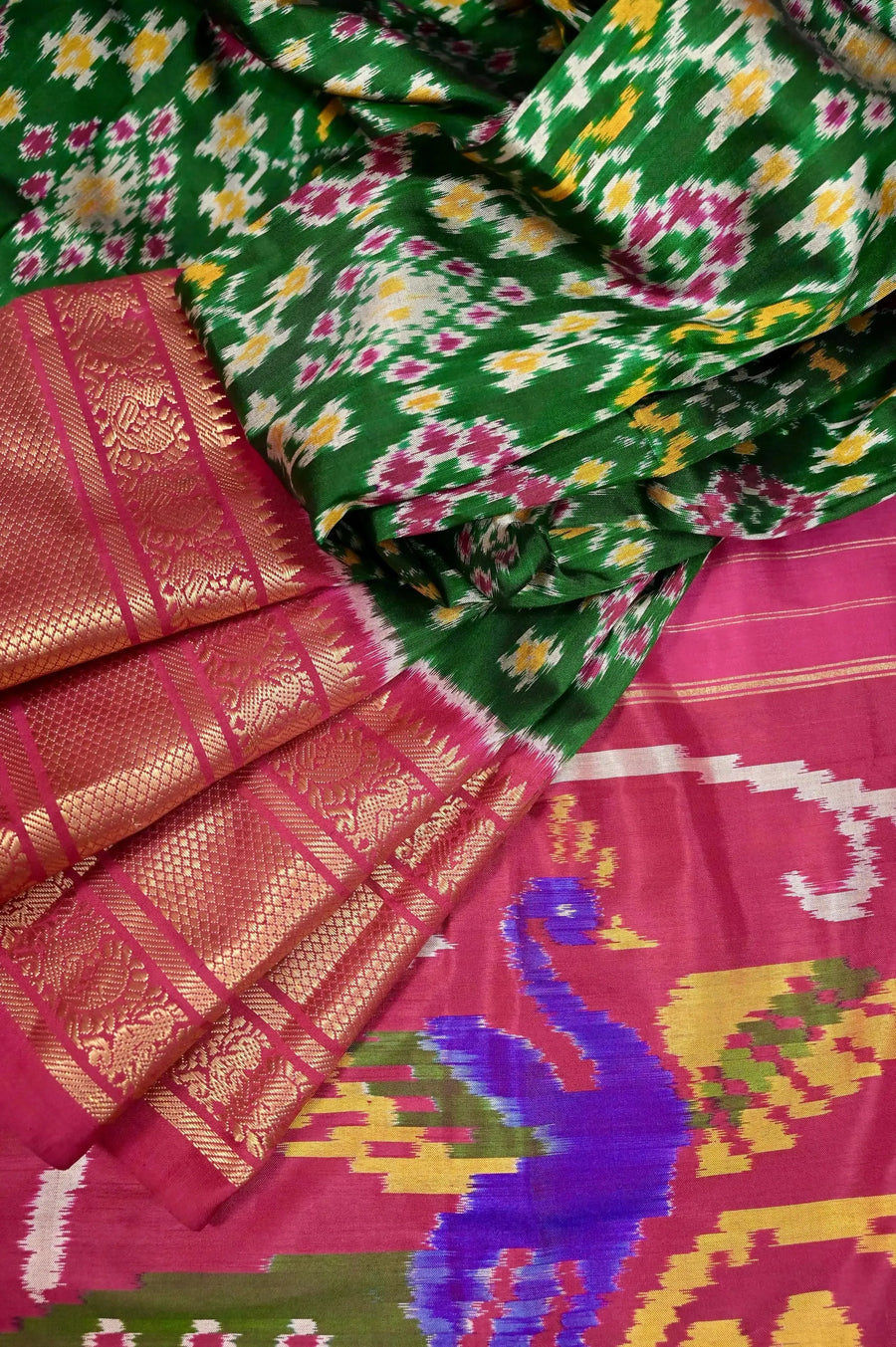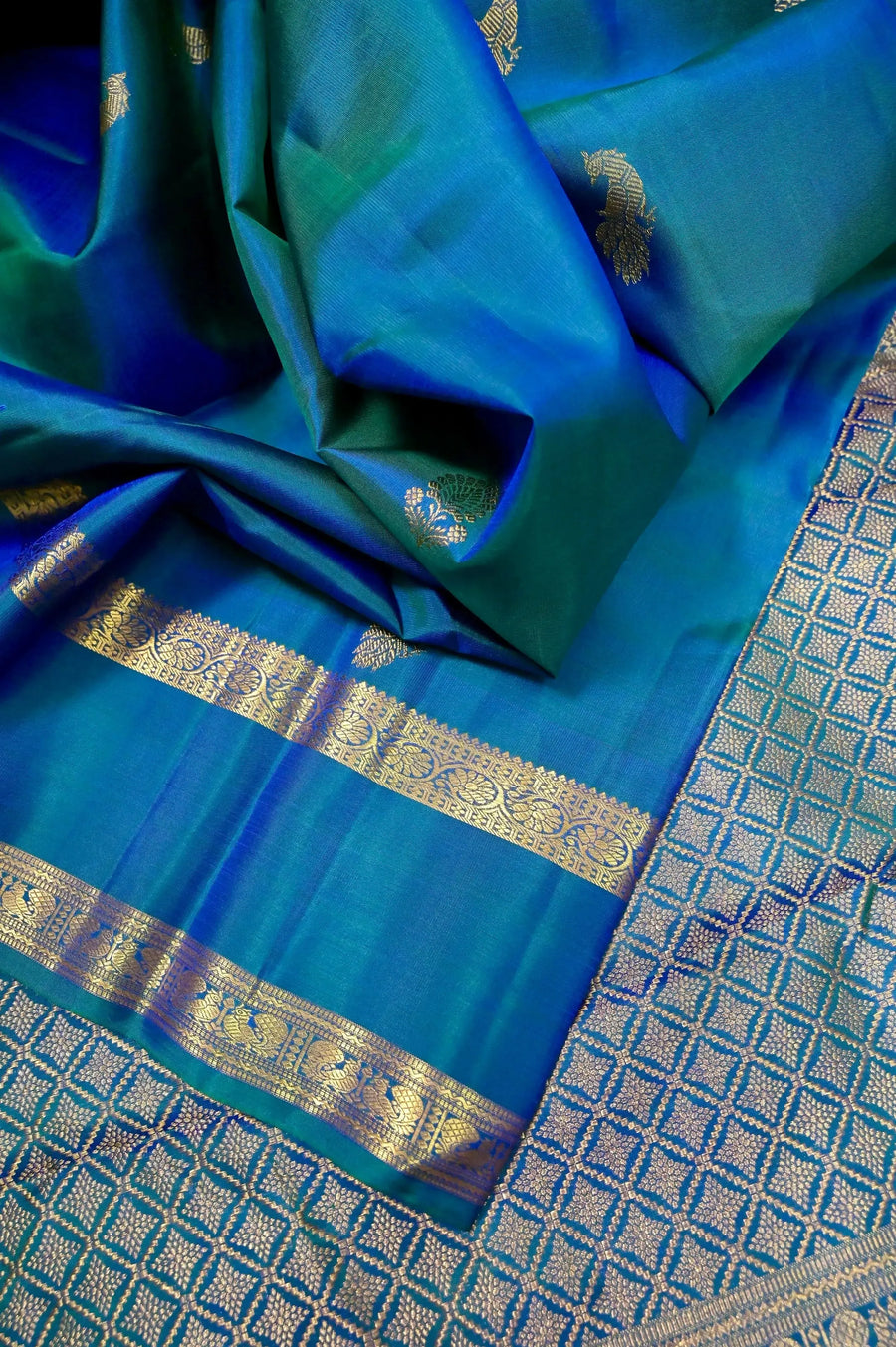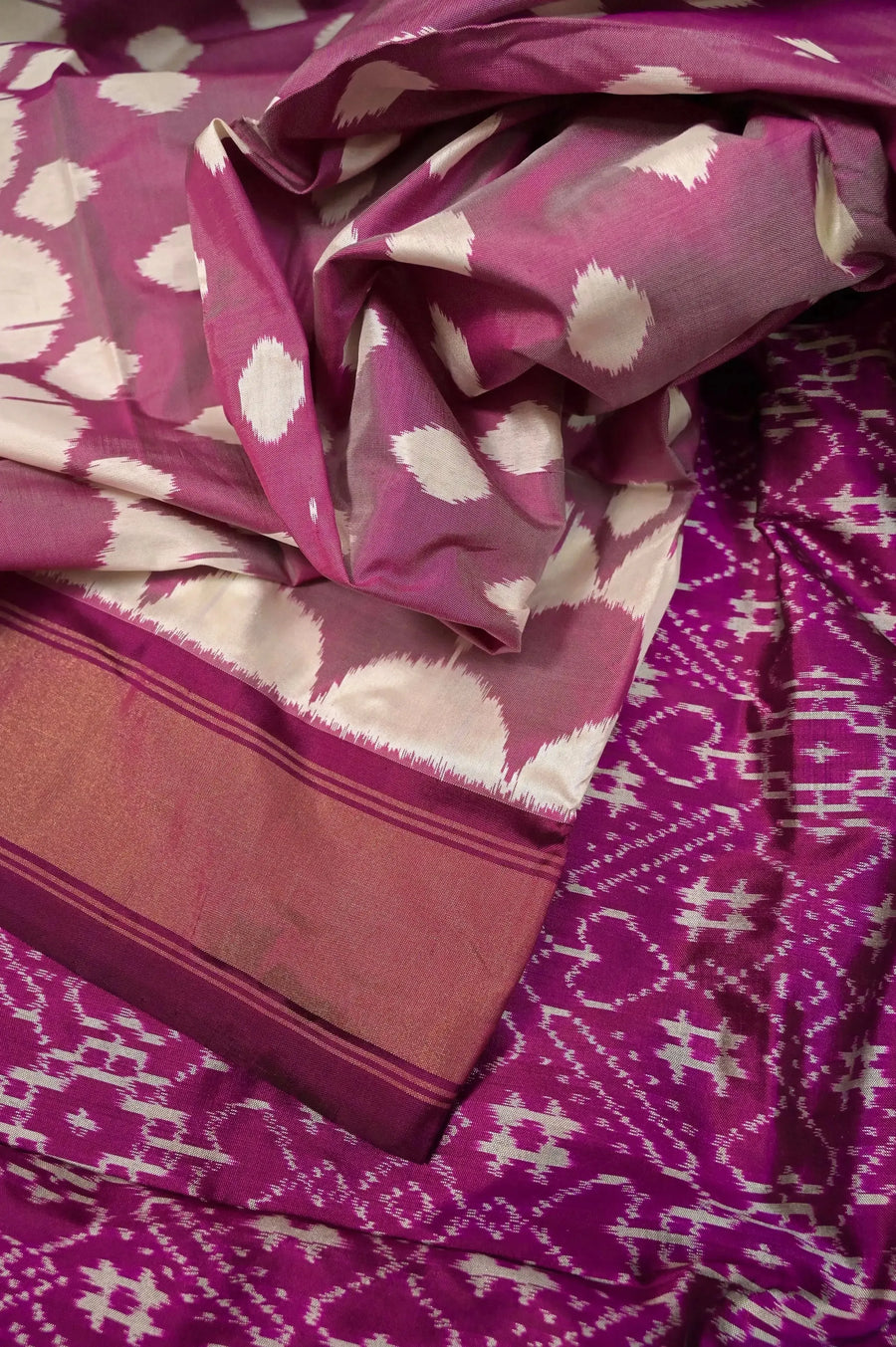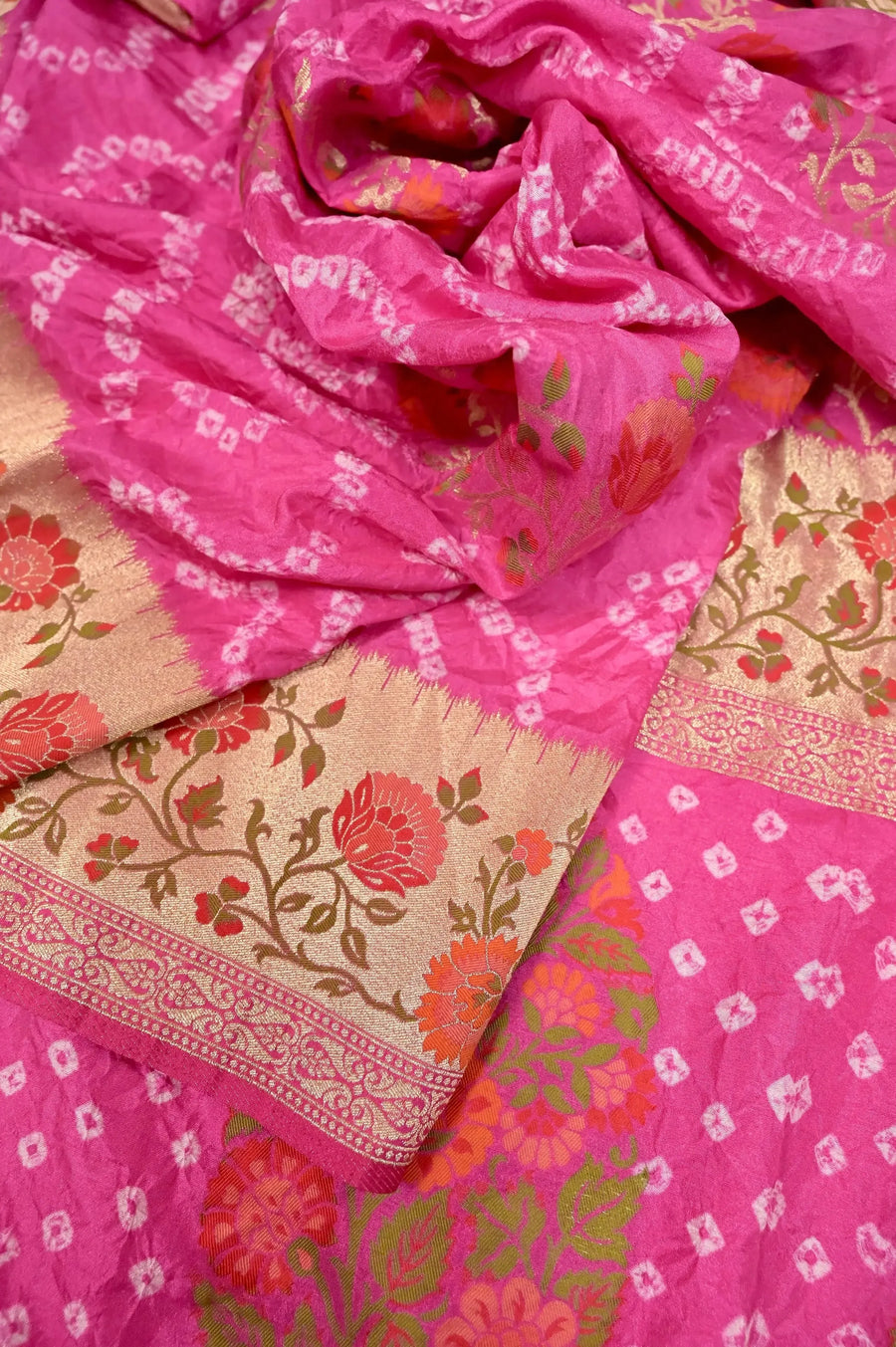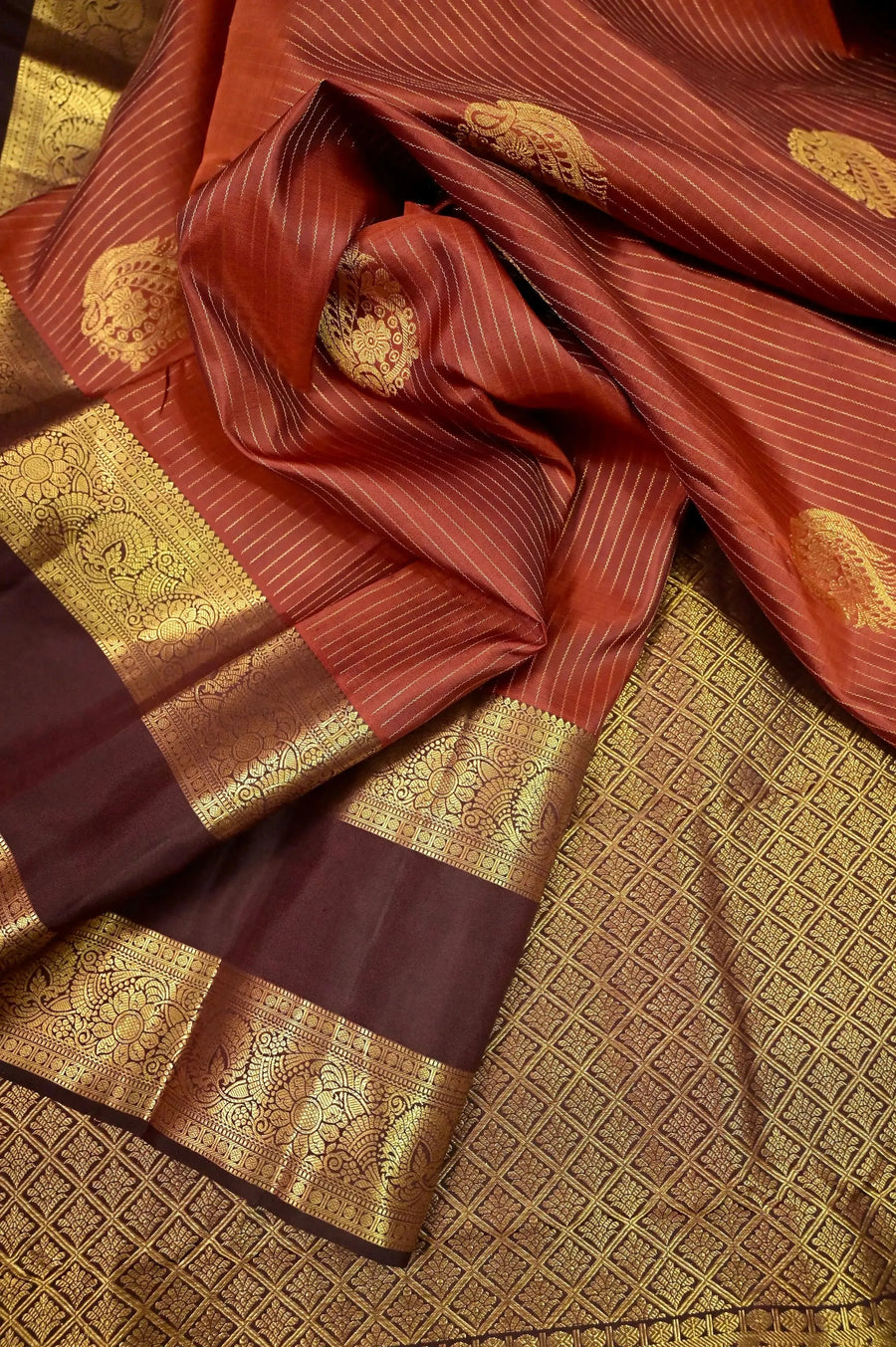Andhra Pradesh: A Tale of Color and Craft
Now let’s head to Andhra Pradesh, a land rich in weaves and stories.
First up: Pochampally Ikat. Recognized by UNESCO, Pochampally sarees are all about intricate geometric patterns and bold, contrasting colors. The magic lies in the ikat technique, where yarns are dyed before weaving—imagine painting a picture before you even assemble the canvas!
Then there’s Narayanpet, a lesser-known gem that’s getting its well-deserved moment in the sun. These sarees are lightweight, come with signature checked patterns and contrasting borders, and are perfect for daily wear or workwear chic. Comfortable and classy? Yes, please.
Karnataka: The Gold Glow of Mysore Silk
Next stop: Karnataka. Think of silk that glides like butter and shines like the morning sun—that’s Mysore Silk for you.
Born under royal patronage during the reign of the Wodeyars, these sarees are known for their rich, pure silk and subtle gold borders. Unlike the heavier Kanjeevaram, Mysore silks have a sleek, minimalist vibe that works for everything from weddings to work meetings.
Fun fact: Real Mysore Silks come with a unique code and hologram label—because when you're wearing royalty, it better come with proof!


